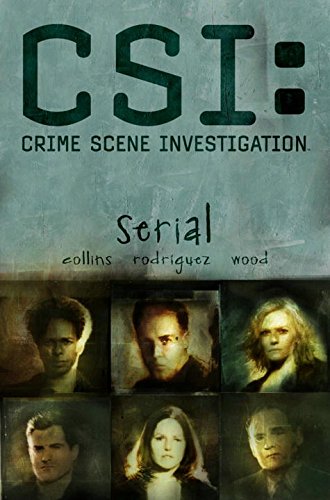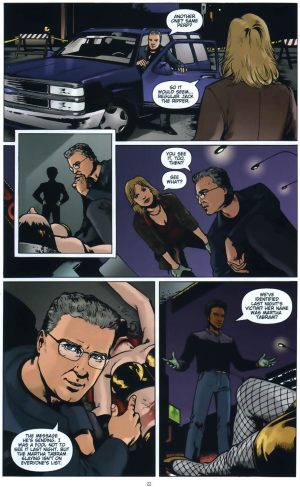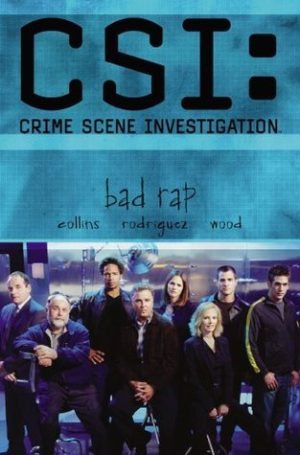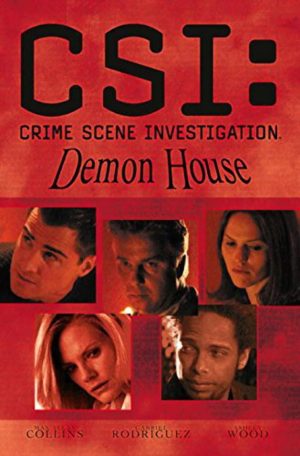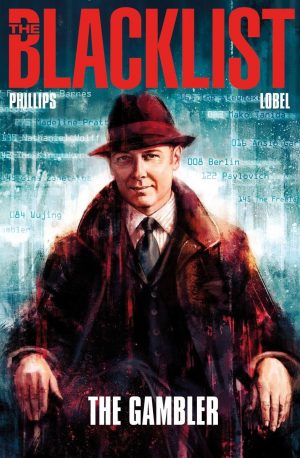Review by Ian Keogh
With the second CSI graphic novel Max Allan Collins takes over as writer, which makes perfect sense. His long track record straddling crime novels and crime graphic novels is an ideal fit. Artists Gabriel Rodriguez and Ashley Wood remain in place, with Rodriguez carrying most of the storytelling and Wood supplying the sketchier scenes as investigators speculate as to what occurred before they arrived.
If the primary plot of a killer duplicating the murders of Jack the Ripper in Las Vegas over a century later seems a little sensational for the usually grounded CSI crew, it nonetheless works. In part this is because Collins is a master at leading readers into false assumptions, a prime example occurring shortly after the first body is found, when the police get a call about another corpse in a dumpster. It’s an excellently paced scene with a great payoff. Although not cover credited, Collins is working with Matthew V. Clemens, credited internally for both plot assist and forensics research, that integral to a story about forensic investigators. His work pays off, as the forensic details are seamlessly passed on without greatly interrupting the flow.
Cast likenesses provided by Rodriguez are approximate instead of exact, sold as much via accessories, although he can really draw a good likeness of Paul Guilfoyle’s Captain Brass. By and large there’s not much call for the cast to move, which is just as well, because if there’s problem with the art it’s an occasional posing of the figures. What definitely hasn’t stood the test of time, though, is very primitive colouring. Wood’s painted scenes are deliberately blurred, indicating rushed action.
Much as on the TV show, there’s little characterisation, but it’s not Collins’ job to make up for what’s not prioritised on TV. Perhaps it’s more apparent when reading dialogue constantly intended to move a plot forward than it would be when actors are speaking the lines.
There’s been no shortage of speculation about Jack the Ripper’s identity and motives over the years, and Collins has fed in his thoughts by the time the CSI team has solved the case. Collins has a feeling for crime, so the solution isn’t as obvious as it may first seem, which is what readers of mysteries want. This is an efficient use of the cast, and Collins follows up with Bad Rap. All three of Collins’ CSI stories are collected in the first Case Files volume.
